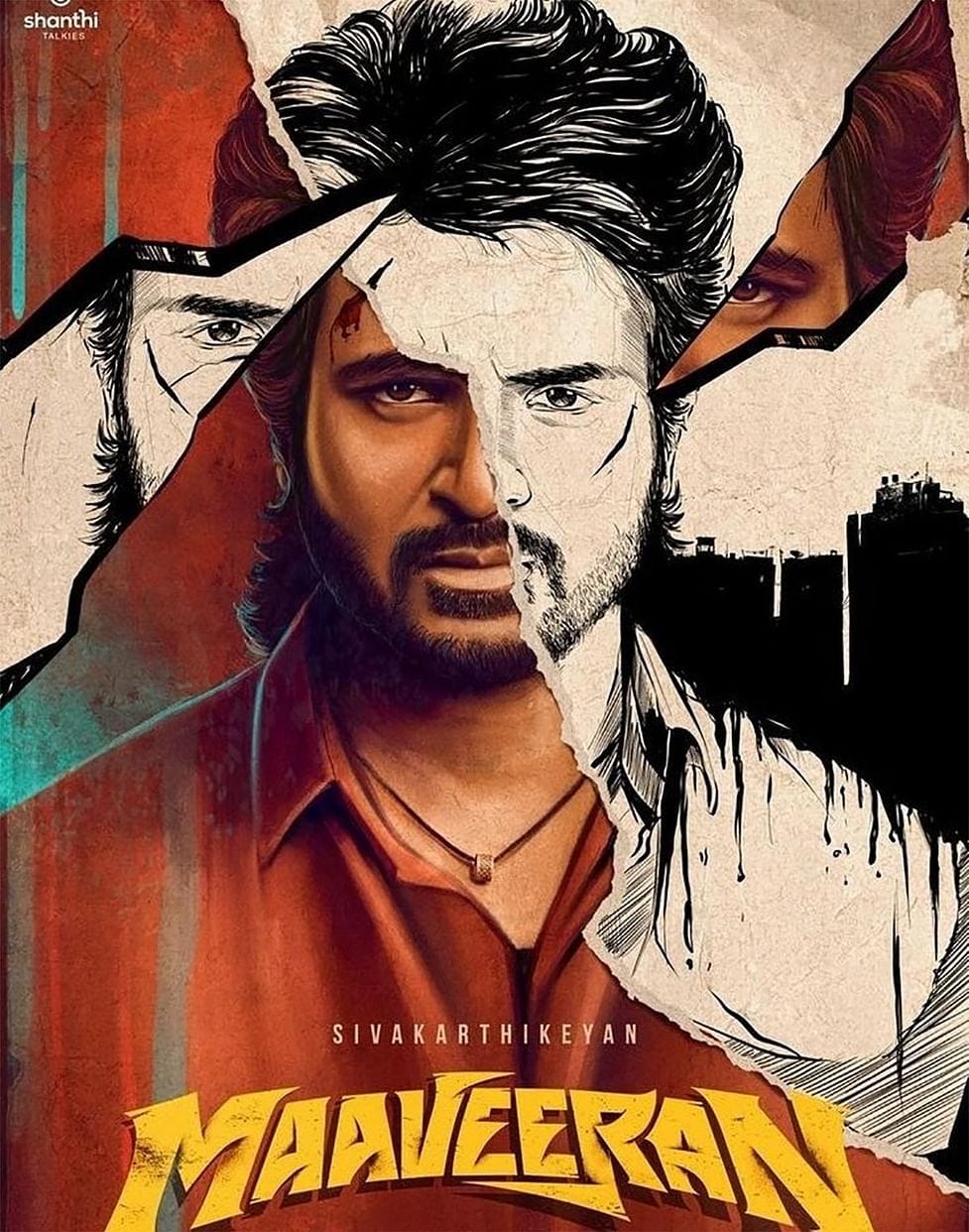I watched Maaveeran last evening, almost a week after its release and only because they were taking it off the screens here today to make space for Barbenheimer. I haven’t watched any of Sivakarthikeyan’s movies on the big screen before, and Madonne Ashwin’s Mandela has been sitting on my watchlist for ages now. I knew this was about a comic artist, and that it had Vijay Sethupathi doing a voice-over, and Sivakarthikeyan’s movies are broadly fun. And so, I went.
First half, second half : I love it when a movie is authentic to its genre, but with commercial movies I love it when they are commercials but not giving in to the same old tropes. Maaveeran almost did this in the first half with no random song sequences for the lead couple, and an interesting comedy track that did not overshadow the plot.
I particularly enjoyed the initial stand-offs between the hero and the two villains (seemed like Sunil Varma and Mysskin were competing in the first half). I loved the scene where the sword is drawn from its sheath unbeknownst to the hero, followed by the fight sequence, which ends with the hero putting the sheath back on the sword in one swift, clean move. Mass!
Then in the second half, the movie decided it had had enough of being fun, and decided to dive head-first into Tamil masala film tropes. The villain went rabid with dialogies, and the climax was all but a soap opera smoking melodrama for breakfast. The only shining light in an abysmal second half was Yogi Babu’s occasional comedy (Tujhe dekha toh yeh jaana sanam,heheh).
The reluctant hero archetype: Sivakarthikeyan plays the reluctant hero, and the apparent selfishness of this character and the return to heroism moments are well portrayed.
The scenes where the villain closes the hero’s ears thinking he can’t hear the voice, are rather well crafted, and answers the unasked questions the audience are thinking when watching the story unfold.
The break where the hero does not hear voice is well placed too, and nicely breaks the monotony that would otherwise result if the movie continued in the same voiceover format.
The Scream painting: I get unreasonably excited when I see popular art referenced well in movies. The hero sits with a psychiatrist, with The Scream placed right behind him, and as the camera moves, the hero replaces the agonized face in the painting and is framed by the unnaturally orange sky.
The Scream, by artist Edvard Munch, has been explained as a depiction of an individual suffering from depersonalization disorder experiences, a feeling of distortion of the environment and one's self. An apt choice of art for the Maaveeran voiceover, and perhaps an attempt at explanaing where the voice comes from.
Mysskin, the villain: Mysskin has some of the best dialogues in the movie. Dialogies like ‘same pinch’ and ‘you’re hearing the voice now, I’ve been hearing it for 22 years’ elicited many laughs.
The dynamic between Mysskin’s character and Suresh Varma’s character, was an interesting parallel to the hero hearing Maaveran’s voice. It was an interesting, albeit surface-level exploration of how the voices of the people we surround ourselves with turn into the voices in our head.
During the interval, I was thinking that I like Mysskin as a villain. Just when I was marginally thankful that they didn’t turn his role into some entirely weird caricature like Kalabhavan Mani’s role in Gemini, the second half destroyed all hopes. In the second half, in an attempt to further villainize Mysskin’s character, there are upside-down shots of Mysskin smoking and reverse angle shots in red with close-ups no one asked for (I only know these because of Maniratnam’s penchant for these angles). The villainization is further cemented with copy-paste ‘pichakara naaigala’ and ‘naan arasiyalvaadhi da’ dialogues. It’s almost like Mysskin annoyed K. Bhagyaraj in the course of making the movie, and he cancelled all the excellent dialogues he gave Mysskin in the first half, with rather basic content in the second half. I wish they’d done better for Mysskin’s sake. He wasn’t too bad, and I’d love to see him in more villain roles, but without the hysterics. Too bad they killed his character in this one for no reason other than to tick the ‘good triumphs over evil’ check-box.
The climax: So the prophecy was ‘uyiraye kuduthu makkalai kaapaatrinaan’ and he fulfilled that when he rescued his people. Why then, did the prophecy play again when he saw one lone kid stuck in falling building? Why force a rescue the child scene?
Was it because if they had to pick between Amma sentiment (I was honestly expecting something to happen to his mother, a la Tamil cinema) and child saviour sentiment, the latter was the lesser evil? The child hanging off the building, the ‘kai vitraadha’ and ‘ammaaa’ screams by the child hanging in mid air, lowering her with a rope made of sarees, his leg getting stuck for no good reason - the entire climax in fact, was quite an anti-climax. I exited with a ‘meh’ impression of the movie, and an overall why did I watch this movie on the big screen again feeling. I had to consciously remember that I enjoyed the first half of the movie, and it wasn’t too bad after all.
[Edit 20Jul: @eduthomgoutham spotted that in the beginning of the movie, they show a comic panel that depicts Maaveran saving the princess with cloth, and the climax is structured in the same manner as the comic shown in the beginning. That changed my perspective on why the saving of Ilavarasi is a part of the plot, and why she was rescued in that specific manner.]
The open endings that Indian movies have been adopting, with the end scenes allowing for potential sequels and a universe of characters, is promising. Hoping to see another Maaveran story - Veerame jayam.




